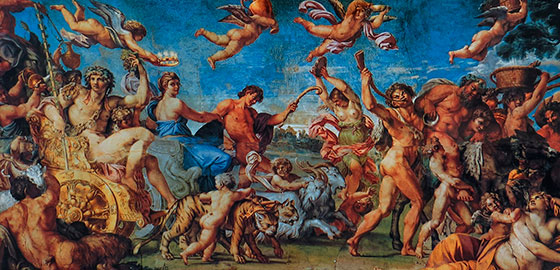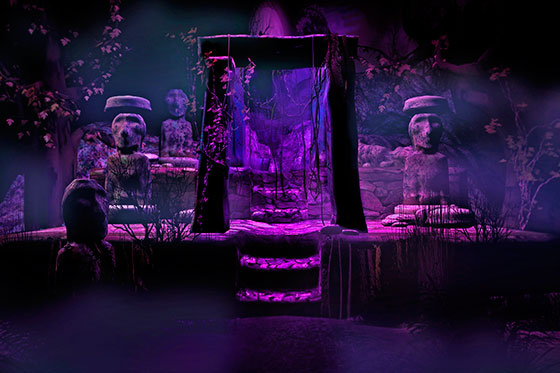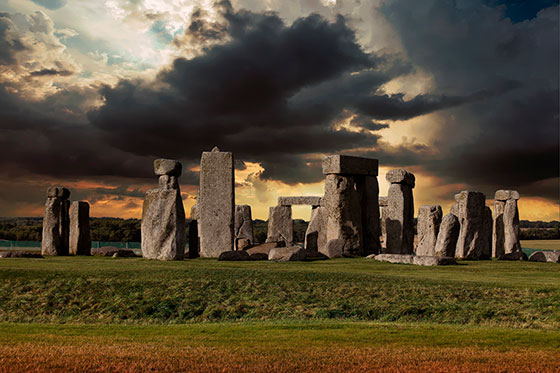People began to think about what the Universe is like in ancient times, before the advent of writing and more or less scientific methods of understanding the world around us. Ancient man in his ideas proceeded from that poor set of knowledge that he could obtain by observing the nature among which he lived.
Modern science borrowed an approximate understanding of the most ancient cosmogonic theories from the worldviews of the peoples of Africa and Northern Siberia, whose culture for a long time did not come into contact with the universal one.
Representations of prehistoric peoples
Prehistoric people considered the world around them to be a single living being, huge and incomprehensible. So, until recently, one of the Siberian tribes had an idea of the world as a huge doe grazing among the stars. Her wool is endless forests, and animals, birds and people are just fleas living in wool. When they bother too much, the deer tries to get rid of them by swimming in the river (rainy autumn) or wallowing in the snow (winter). The sun and the moon are also gigantic animals grazing next to the doe-Earth.
Ancient Egyptians and Greeks
The peoples, whose level of development was higher, got the opportunity to travel to distant countries and saw that there were not only mountains, or steppes, or forests in the world. They imagined the Earth as a flat disk or a high mountain, surrounded on all sides by an endless sea. The vault of heaven in the form of a huge overturned bowl sank its edges into this sea, closing the small Universe of the ancient world. 
Such ideas existed among the ancient Egyptians and Greeks. According to their cosmogonic version, the deity-Sun every day rolled across the vault of heaven in a fiery chariot, illuminating the plane of the Earth.
Wisdom of Ancient India
The ancient Indians had a legend that the plane of the Earth does not just soar in the sky or floats in the oceans, but rests on the backs of three giant elephants, which, in turn, stand on a tortoise shell. Considering that the tortoise, in turn, rested on a coiled snake, which personified the vault of heaven, we can assume that the described animals are nothing more than symbols of powerful natural phenomena.
Ancient China and world harmony
In ancient China, the universe was thought to be like an egg split in half. The upper part of the egg forms the vault of heaven and is the focus of everything pure, light and bright. The lower part of the egg is the Earth, floating in the oceans and having a square shape. 
Earthly manifestations are accompanied by darkness, heaviness and dirt. The combination of two opposite principles forms our whole world in its richness and diversity.
Aztecs, Incas, Maya
In the views of the ancient inhabitants of the American continent, time and space were a single whole and were denoted by the same word "pacha". For them, time was a ring, on one side of which was the present and the visible past, i.e. what was stored in memory. The future was in the invisible part of the ring and at some point connected with the deep past.
Scientific thought of ancient Greece
More than two thousand years ago, the ancient Greek mathematicians Pythagoras, followed by Aristotle, developed the theory of a spherical Earth, which, in their opinion, was the center of the universe. The Sun, the Moon and numerous stars revolved around, fixed on several crystal celestial spheres nested one in another.
The universe of Aristotle, developed and supplemented by another scientist of antiquity - Ptolemy - existed for a millennium and a half, satisfying the intellectual demands of the majority of ancient scientists. 
These ideas formed the basis for the research of the great mathematician Nicolaus Copernicus, who, on the basis of his observations and calculations, compiled his own, heliocentric picture of the world. Its center was occupied by the Sun, around which there were seven planets, surrounded by a motionless celestial sphere with stars placed on it. The teachings of Copernicus gave impetus to modern astronomy, the emergence of such scientists as Galileo Galilei, Johannes Kepler and others.
